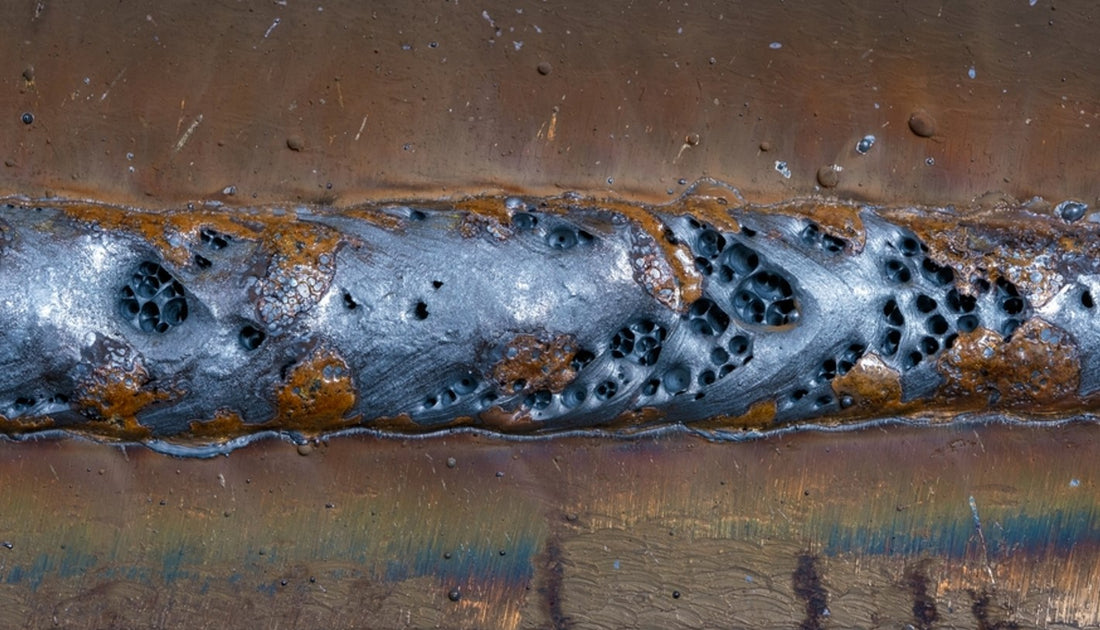What is Porosity in Welding: Common Sources and Effective Solutions
What is Porosity in Welding: Common Sources and Effective Solutions
Blog Article
Untangling the Enigma of Porosity in Welding: Tips for Minimizing Defects and Maximizing Quality
In the detailed world of welding, porosity continues to be a consistent difficulty that can significantly affect the high quality and stability of welded joints. Comprehending the factors that add to porosity development is essential in the pursuit of remarkable welds. By deciphering the mystery of porosity and executing effective strategies for issue minimization, welders can boost the criteria of their work to accomplish premium high quality end results. As we look into the midsts of porosity in welding, revealing the tricks to its prevention and control will certainly be extremely important for professionals looking for to understand the art of top notch weldments.
Recognizing Porosity in Welding
Porosity in welding, a common issue encountered by welders, refers to the visibility of gas pockets or spaces in the welded material, which can compromise the honesty and top quality of the weld. These gas pockets are typically entraped during the welding process due to various variables such as improper shielding gas, infected base products, or wrong welding specifications. The development of porosity can damage the weld, making it vulnerable to splitting and rust, inevitably leading to architectural failures.
By identifying the significance of maintaining proper gas protecting, making certain the cleanliness of base products, and maximizing welding setups, welders can dramatically lower the possibility of porosity formation. On the whole, a detailed understanding of porosity in welding is necessary for welders to create top notch and long lasting welds.

Typical Reasons of Porosity
When evaluating welding procedures for potential high quality issues, comprehending the common reasons of porosity is crucial for preserving weld stability and protecting against architectural failures. Porosity, identified by the existence of dental caries or spaces in the weld metal, can significantly compromise the mechanical residential or commercial properties of a welded joint.
Furthermore, welding at improper specifications, such as excessively high traveling rates or currents, can generate too much disturbance in the weld pool, capturing gases and triggering porosity. By resolving these typical causes through correct gas securing, product prep work, and adherence to optimum welding criteria, welders can minimize porosity and boost the high quality of their welds.
Techniques for Porosity Prevention
Implementing reliable precautionary measures is vital in lessening the event of porosity in welding processes. One technique for porosity prevention is making certain correct cleaning of the base steel before welding. Contaminants such as oil, grease, corrosion, and paint can bring about porosity, so extensive cleaning making use of appropriate solvents or mechanical approaches is important.

An additional trick safety net is the option of the appropriate welding consumables. Utilizing premium filler materials and securing gases that appropriate for the base metal and welding procedure can significantly lower the risk of porosity. Furthermore, preserving appropriate welding specifications, such as voltage, present, take a trip rate, and gas circulation rate, is vital for porosity avoidance. Departing from the advised setups can cause inappropriate gas coverage and inadequate blend, bring about porosity.
Furthermore, employing proper welding techniques, such as preserving a constant travel speed, try this site electrode angle, and arc size, can aid protect against porosity (What is Porosity). Sufficient training of welders to ensure they comply with ideal practices and quality assurance procedures is likewise crucial in minimizing porosity flaws in welding

Best Practices for Top Quality Welds
One key practice is preserving proper cleanliness in the welding location. Extensively cleansing the work surface and surrounding location before welding can help mitigate these concerns.
Another best technique is to carefully pick the proper welding specifications for the certain products being joined. This includes setting the right voltage, existing, take a trip rate, and protecting gas circulation price. Appropriate parameter choice makes certain optimum weld penetration, blend, and overall quality. Utilizing high-quality welding consumables, such as electrodes and filler learn the facts here now steels, can substantially influence the last weld quality. Purchasing premium consumables can result in more powerful, extra sturdy welds with fewer problems. By adhering to these ideal methods, welders can consistently create high-quality welds that image source meet sector standards and surpass client assumptions.
Significance of Porosity Control
Porosity control plays a vital duty in making certain the honesty and top quality of welding joints. Porosity, characterized by the presence of tooth cavities or gaps within the weld steel, can dramatically endanger the mechanical homes and structural honesty of the weld. Extreme porosity weakens the weld, making it a lot more susceptible to breaking, corrosion, and general failing under operational tons.
Efficient porosity control is important for preserving the preferred mechanical properties, such as strength, ductility, and durability, of the welded joint. What is Porosity. By lessening porosity, welders can boost the general high quality and reliability of the weld, guaranteeing that it meets the efficiency demands of the designated application
In addition, porosity control is vital for accomplishing the wanted visual look of the weld. Too much porosity not only compromises the weld but additionally interferes with its visual charm, which can be crucial in industries where looks are important. Appropriate porosity control strategies, such as utilizing the appropriate shielding gas, regulating the welding parameters, and making sure appropriate cleanliness of the base materials, are vital for creating high-quality welds with very little issues.

Verdict
Finally, porosity in welding is an usual defect that can jeopardize the quality of the weld. By recognizing the reasons for porosity and executing appropriate avoidance techniques, welders can reduce defects and accomplish better welds. It is necessary to manage porosity in welding to guarantee the stability and stamina of the end product. Applying best practices for porosity control is vital for accomplishing ideal welding outcomes.
Report this page